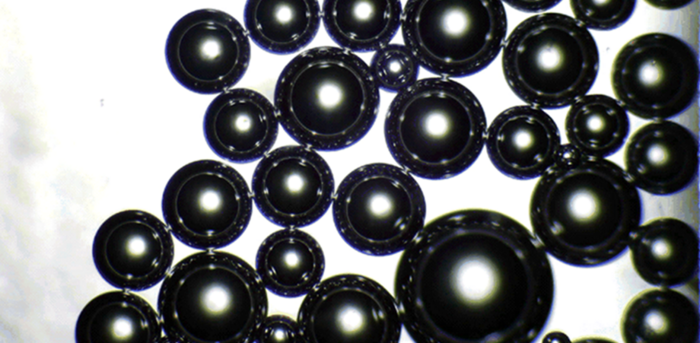Microplastics are tiny plastic particles less than 5 mm in diameter that have emerged as a novel marine environment pollutant. Microplastics usually result from a breakdown of larger plastic debris but can also be generated from plastic microbeads used in personal care products. Over the years, there has been a significant buildup of microplastic pollutants in our oceans, with a recent estimate that the world’s oceans contain over 24.4 trillion pieces of microplastics weighing between 82,000 and 578,000 tons. It is highly likely that microplastics are being consumed by marine organisms and have pervaded the aquatic food chain.

Credit: The Authors, doi: 10.1117/1.OE.62.3.034102.
Microplastics are tiny plastic particles less than 5 mm in diameter that have emerged as a novel marine environment pollutant. Microplastics usually result from a breakdown of larger plastic debris but can also be generated from plastic microbeads used in personal care products. Over the years, there has been a significant buildup of microplastic pollutants in our oceans, with a recent estimate that the world’s oceans contain over 24.4 trillion pieces of microplastics weighing between 82,000 and 578,000 tons. It is highly likely that microplastics are being consumed by marine organisms and have pervaded the aquatic food chain.
Additionally, microplastics have negatively affected the marine ecosystem by hindering light transmission through the ocean waters. This has disrupted the functioning of photosynthetic organisms, such as phytoplankton and algae, which can lead to a cascading effect on the entire food chain. It is, therefore, imperative to assess the radiative properties (absorption and scattering) of microplastics to determine the extent of disruption they cause to light propagation.
Fortunately, in a new study published in Optical Engineering, researchers from China and Singapore rose to the occasion. In their study, they determined the absorption coefficient and reflectivity of polyamide-12 (PA12), a common marine microplastic pollutant that is generated in the clothing, cosmetic, and packing industries. The researchers specifically focused on measuring two important parameters: the absorption coefficient, which indicates the amount of light absorbed, and the extinction coefficient, which accounts for the light attenuated (absorbed and scattered) by the particles.
Accordingly, they constructed an optical experimental setup containing a light source, optical fibers, an adjustable cuvette holder to hold the microplastic solution being inspected, and a spectrometer to assess the amount of light transmitted through the sample. For the microplastic solution, they prepared a suspension containing PA12 particles with a mean diameter of about 97.8 µm. To assess the degree of light scattering, they measured the amount of light transmitted through a glass cuvette containing deionized water without any contaminant to set a benchmark. They then repeated the experiment with microplastic powder suspension in a quartz glass cuvette. From these measurements, they estimated the extinction coefficient of PA12.
The absorption parameters were measured similarly. The researchers used an integrating sphere to collect the light scattered by the microplastic suspension in different directions and directed it toward a spectrometer for analysis.
The analysis revealed a scattering albedo (ratio of scattering efficiency to total extinction efficiency) of 0.7 for the PA12 suspension, implying that most of the light passing through it was scattered. “The scattering-dominated characteristic of PA12 changes the distribution of light in seawater, which, in turn, affects the marine ecology,” said Dr. Chunyang Ma, the corresponding author of the study.
Additionally, the PA12 particles were found to absorb the incident radiation at certain specific wavelengths. “Absorption peaks of PA12 were observed at wavelengths of 692, 728, 764, 800, 835, and 940 nm. These correspond to the vibrational absorption of methylene and amide groups,” Ma said.
With these insights, the researchers suggest that the radiative properties of PA12 can be used to optically monitor the flow of microplastics into oceans. This, in turn, could help us prevent their entry into the aquatic as well as terrestrial food chain, mitigating its threat to all forms of life, including humans.
Read the paper by Wen et al., “Thermal radiative properties of polyamide-12 from 0.2 to 1.1 μm” Opt. Eng. 62(3) 034102 (2023). doi: 10.1117/1.OE.62.3.034102.
Journal
Optical Engineering
DOI
10.1117/1.OE.62.3.034102
Article Title
Thermal radiative properties of polyamide-12 from 0.2 to 1.1 μm
Article Publication Date
6-Mar-2023




